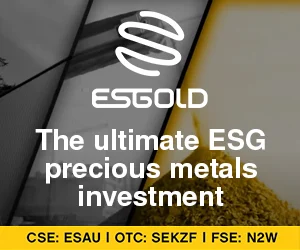Platinum has recently captured the attention of investors and market analysts alike, breaking out of a years-long price range that had confined it between US$900 and US$1,100 per ounce. On June 9, 2023, the precious metal surged past US$1,200, marking its highest price since May 2021. This article delves into the factors driving this remarkable price activity and explores whether the current market fundamentals can sustain these elevated levels.
A Persistent Supply Deficit
For several years, platinum has faced a significant supply deficit. According to the World Platinum Investment Council’s latest quarterly report, this deficit is projected to reach 966,000 ounces by 2025, marking the third consecutive year of shortfall. This follows deficits of 922,000 ounces in 2024 and 896,000 ounces in 2023.
The question arises: why have prices remained stagnant for so long? The Sprott report indicates that aboveground inventories have been filling the supply gap, but these stockpiles are rapidly depleting. By 2025, they are expected to dwindle to just 2.5 million ounces, putting them on track to run dry within the next two to three years.
Challenges in South Africa
A primary contributor to the supply deficit is the decline in primary supply, particularly from South Africa, which accounts for 80% of the world’s platinum output. Minor disruptions in the workforce, mining regulations, or infrastructure can significantly impact global supply.
South Africa has been grappling with an energy crisis since 2020, leading to rolling blackouts initiated by state power company Eskom. The economic costs of these blackouts have been estimated in the hundreds of millions of rand, and the situation has only worsened. In 2023 alone, the country experienced 91 days of blackouts, severely affecting mining operations.
While Eskom managed to stabilize the power grid for much of 2024, new scheduled blackouts in January 2025 highlighted the grid’s fragility. The lack of new mine supply further complicates the situation, as establishing new mines can take over a decade and requires significant investment.
Demand from the Automotive Sector
The automotive sector remains the primary driver of platinum demand, particularly in emission control systems like catalytic converters for internal combustion engines. However, the rise of electric and hybrid vehicles poses a challenge, as these vehicles do not require the same platinum loadouts.
According to the International Energy Agency, global sales of electric and hybrid vehicles have surged from approximately 2 million in 2019 to over 17 million by 2024. While the growth rate is slowing, policy changes in the U.S. could drive consumers back to internal combustion engine vehicles, potentially increasing automotive demand for platinum to an eight-year high of 3.25 million ounces by 2025.
Despite a projected 9% decline in industrial demand to 2.22 million ounces in 2025, the sector’s needs remain above the 10-year average. Additionally, platinum’s role in hydrogen production and other green technologies could lead to increased demand in the coming years.
Investment Demand on the Rise
Although platinum lacks the same investor base as gold and silver, investment demand is expected to rise, hitting 688,000 ounces in 2025. The Sprott report notes that platinum’s chronic undervaluation has sparked renewed interest among investors, further supporting price momentum.
Is Now a Good Time to Invest in Platinum?
While uncertainty looms over whether platinum’s recent price gains will hold or if it will retreat back toward the US$1,000 mark, the fundamentals suggest a potential for sustained price increases. With persistent deficits expected and aboveground stockpiles nearing depletion, the market appears to be setting up for a breakout.
However, investors should remain cautious. The market is likely to remain volatile in 2025, influenced by uncertainties surrounding U.S. tariffs and trade policies. Due diligence is essential for anyone considering entering this potentially volatile market.
In conclusion, platinum’s recent price activity reflects a complex interplay of supply challenges and shifting demand dynamics. As the market evolves, staying informed about these factors will be crucial for investors looking to navigate the precious metals landscape.
For real-time updates, follow us on Twitter @INN_Resource.
Securities Disclosure: I, Dean Belder, hold no direct investment interest in any company mentioned in this article.




